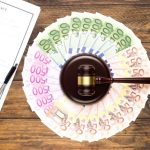Checklist For Nonprovisional Application
Below is the checklist for the nonprovisional patent application listing the elements required for your application to be considered complete:
Utility Patent Application Transmittal Form
It contains a list of the elements of a patent application. The form must be duly signed by the inventor/s.
Fee Transmittal Form
The basic filing, search, and examination fees are to be submitted at the time of filing. In case the applicant does not pay the required fee at this time then a late surcharge fee is levied. This form identifies the fee that has been paid by the applicant.
Application Data Sheet
The bibliographic data of the invention including inventor information, applicant information, application, domestic benefit, correspondence address, foreign priority, and assignee information is mentioned in this form. If the applicant seeks nonpublication of the application, then it needs to be stated in this form.
Small And Micro Entity Status
The USPTO has listed certain criteria to categorize a business as a small or micro entity. Qualifying businesses can tick the SME box provided in the fee transmittal form and earn a discount on some nonprovisional patent application fees.
Specification
A specification is a document written in clear and concise terms describing the invention and the way it is to be used. It is to be written in a manner that makes it legible to a person from the same scientific or technological domain.
The Specification Consists Of The Following Elements
- Title of The Invention: The title must describe the invention within the character limit of 500. It is not the brand name of the product but rather what technically describes it.
- Cross References: Any claimed benefits from earlier provisional or nonprovisional applications may be identified after the title.
- Background: A background that offers context to the invention and the subject matter to which it pertains.
- Summary: A concise writeup that states the general idea of the invention, the problems it solves, its purpose, etc.
- Brief Description of Drawings: An explanation of each figure accompanying the invention.
- Detailed Description of Invention: A clear description of the invention, the process of making it, and its distinguishing factor from other similar products form the structure of a detailed description. It must be mentioned with absolute clarity and completeness allowing a person working in that technology to be able to make and use the invention easily.
- Claim/s: A Claim gives a comprehensive explanation of the subject matter of the invention. In doing so, it defines the scope of the legal protection that a patent will confer upon the invention. Each provisional application must contain at least one and up to three independent claims. A claim set contains an independent claim followed by dependent claims that reference either the independent claim or a prior dependent claim.
- Abstract of Disclosure: An abstract of the disclosure is a 150-words paragraph that explains what is new about the invention.
Drawings
Drawings are to be included in the patent application wherever they are necessary to elucidate the subject matter. These drawings must comply with the stringent requirements of the USPTO and explain the invention as clearly as possible.
Oath/Declaration
Applicants are required to file an oath or declaration with the application establishing that they are the original inventors. An oath requires to be sworn before a notary, while a declaration is neither notarized nor requires a witness.





